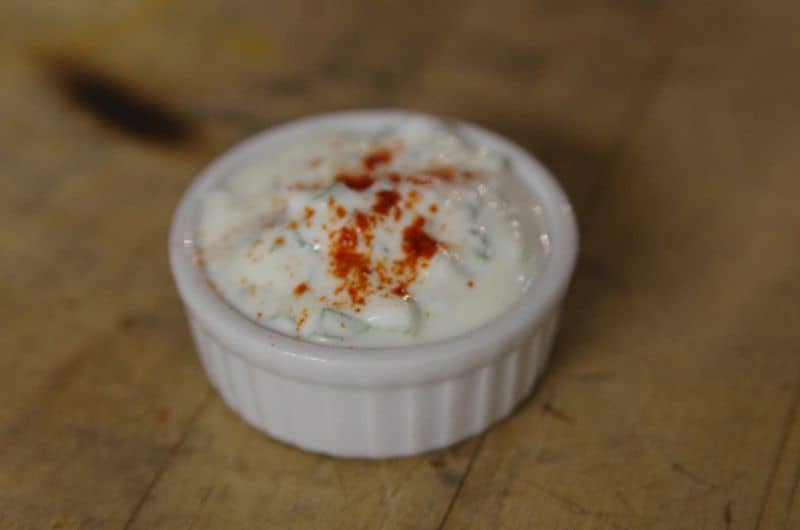Mayonnaise and salad dressing may confuse you as the same, but there is a slight difference between the two. Mayonnaise is a thick, creamy dressing that contains egg yolks, vinegar, and seasonings. Meanwhile, salad dressings do not have egg yolk and it has a sweeter taste than mayonnaise.

The History of Mayonnaise
It was back in 1756, Mago Barca, a chef from Menorca made the term ‘mahonnaise’ for Port Mahon to
Grimod de La Reynière objected with the term ‘mayonnaise’ as it is not a French word and Port Mahon does not offer good food. He preferred the term ‘bayonnaise’, it is named after the city of Bayonne. The City of Bayonne is known for its innovative gourmands and offers the best hams in Europe.
Regardless of the different theories of the term’s origin, it has attested its purpose in adding
Ingredients, Composition, and Types of Mayonnaise
After the numerous theories and ambiguity of the history of mayonnaise in the 18th Century, mayonnaise is still massively produced. When you know the ingredients, composition, and types of mayonnaise, you will have an idea of how to perfectly make homemade mayonnaise. Moreover, manufacturers will have an idea of enhancing their mayonnaise.
Fat Content of Mayonnaise
Mayonnaise contains a massive fraction of fat, and it is measured in
- High-calorie mayonnaise contains fifty-five percent or more fat
- Medium-calorie mayonnaise has forty to fifty-five percent of fat
- Low-calorie mayonnaise only contains forty percent of fat
The Federation of the Condiment Sauce suggests that the standard fat content of a real mayonnaise is at least fifty percent. Products with lesser fat content are called ‘mayonnaise sauce. Choosing the fat content on mayonnaise is often based on a particular dish recipe or on the personal preference of the consumer.
Quality of the Components in Mayonnaise
Egg yolks and vegetable oil are the two main ingredients in making mayonnaise. Most of the mayonnaise is made with sunflower oil or olive oil, but there are some who use oils from soy, peanut, or corn.
Different oils have different tastes, and using sunflower oil is cheaper than olive oil. Moreover, due to the modernization and fast production of mayonnaise, most manufacturers use egg powder instead of real eggs. Consumers prefer mayonnaise with real egg yolks, it has a delicious taste than those who use egg powder or egg products on their mayonnaise. However, the taste is subjective. It is your preference which tastes better.
Make sure that the components of the mayonnaise are in quality and natural.
Shelf Life of Mayonnaise
There is a difference in the shelf life between homemade mayonnaise and manufactured mayonnaise. Mayonnaise that is naturally homemade is from real eggs and natural ingredients without any stabilizers or preservatives. Thus, you can only store it in few days. Meanwhile, manufactured mayonnaise from industries has preservatives. With this, the shelf life of mayonnaise is up to three to four months.
However, the Food and Drug Administration recommends the consumers to buy mayonnaise that has a shelf life that has four months or less.
Packaging of Mayonnaise
There are different types of mayonnaise packaging. Some mayonnaise is packed in jars, bags, buckets, or squeeze bottles. Some prefer mayonnaise in a glass jar because it is environmental-friendly as you can recycle the container.
It is important to check on the package of the mayonnaise. You have to consider the convenience, durability, product label, and product volume. It is best to estimate your mayonnaise needs to estimate the volume of the product to purchase.
Preparation of Mayonnaise
Homemade mayonnaise is prepared by hand with a fork, whisk, or with the aid of an electric mixer. The egg yolks are vigorously whisked to disperse the oil to create an emulsion. Additional ingredients like vinegar or mustard enhance oil emulsification and stabilize it.
Meanwhile, mayonnaise industries use homogenizer mixer machines. The mayonnaise making machine helps manufacturers prepare and produce large-scale mayonnaise. It can produce one thousand liters in ten minutes with proper dispersal and emulsification of the mayonnaise.
Conclusion
The history of mayonnaise came a long way from the 18th Century. However, the ingredients, composition, and purpose of the mayonnaise have not changed. Due to the high demands of mayonnaise, manufacturers resort to using mayonnaise making machine. These machines increase the production rate and produce high-quality mayonnaise at a lower production rate. Nevertheless, it is best to purchase a homemade or industrial mayonnaise that has less than four months of shelf life.





